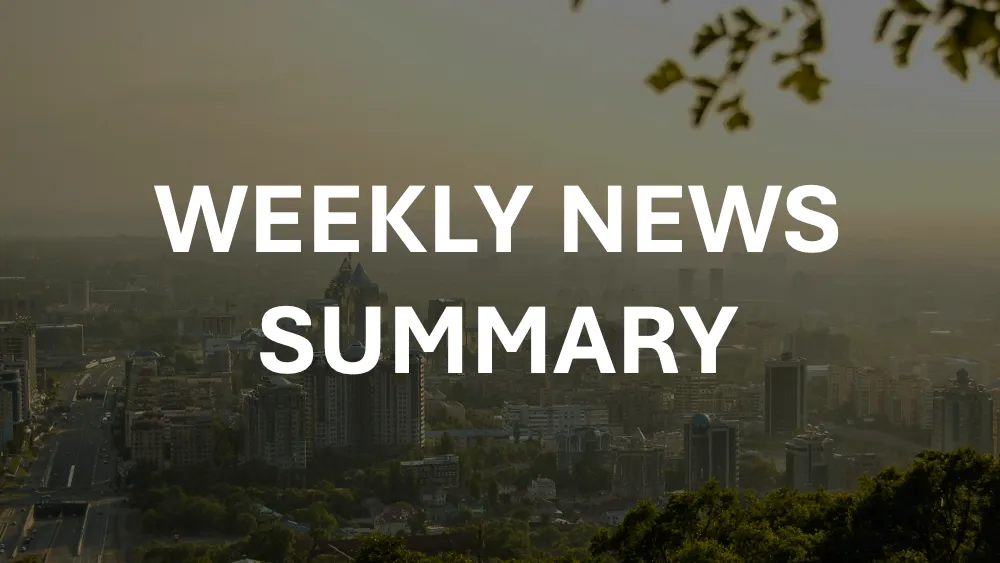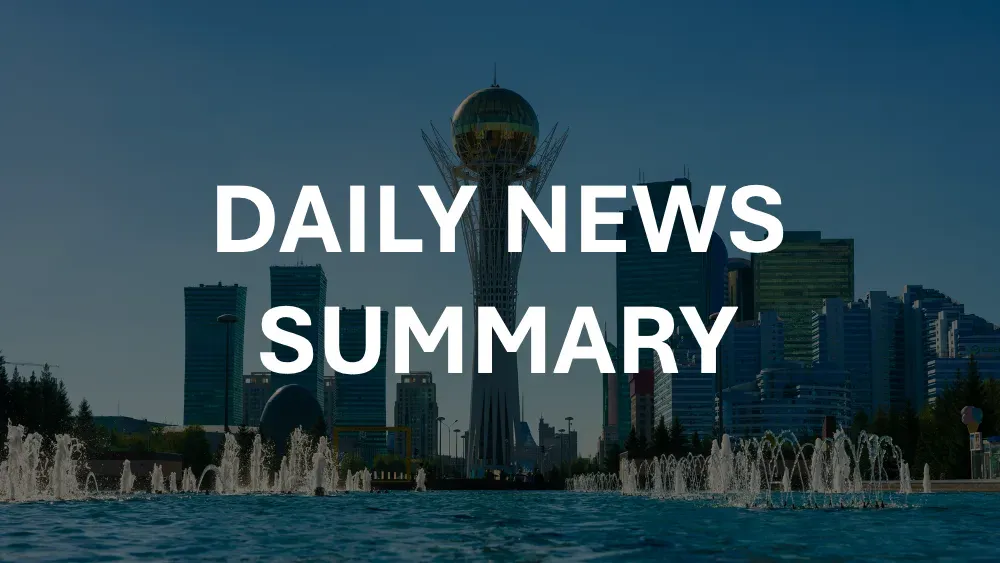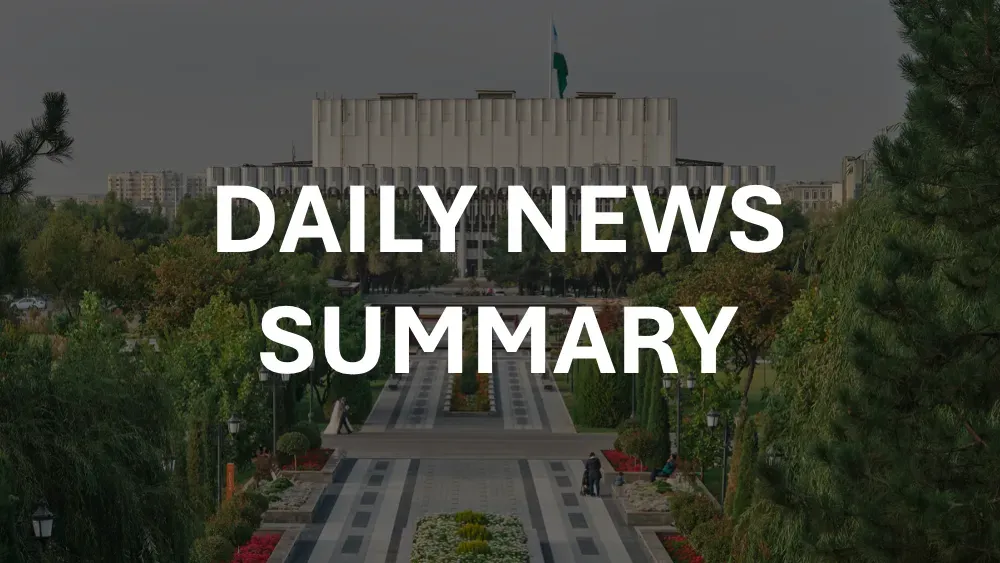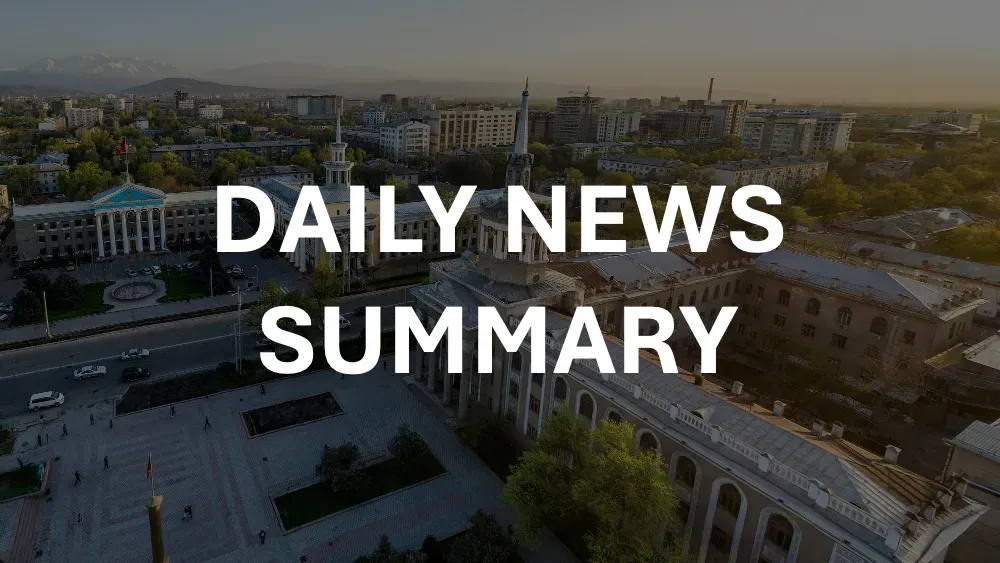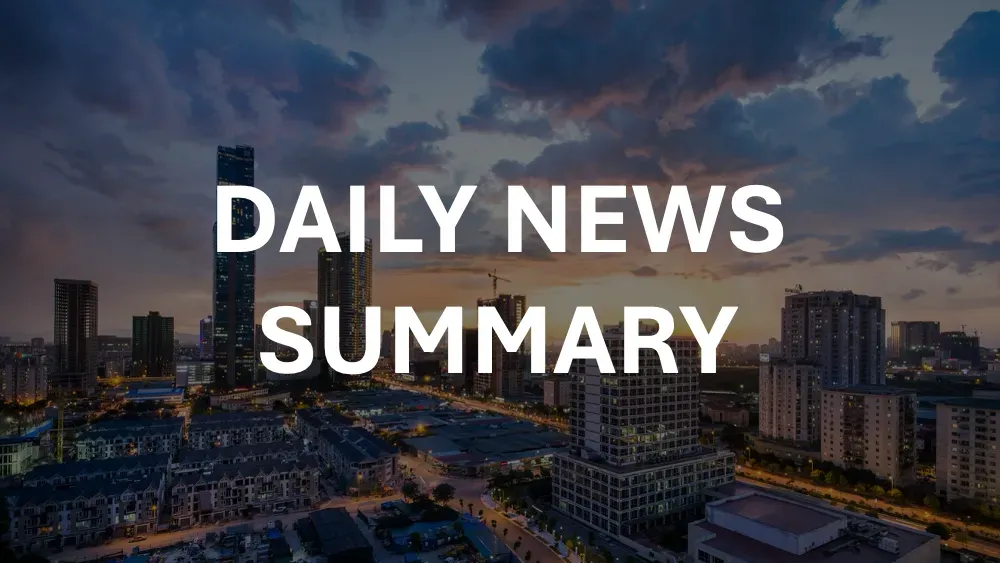This weekly digest showcases just 10 stories. Daily subscribers receive comprehensive intelligence briefs with 40 of the top stories organized by category. Don't miss the stories that matter.
Subscribe to Daily →
August 15, 2025 to August 21, 2025
This week's top 10 stories from Kazakhstan, selected from our daily intelligence briefs.
1. Tenge Weakens as National Bank Sets 19 August Reference at 540 per USD; Exchange Bureaus Quote Wider Spreads in Almaty and Astana
Kazakhstan’s National Bank set the daily reference rates for 19 August at 540.00 KZT per USD and 630.72 KZT per EUR (also RUB 6.72, CNY 75.23, GBP 730.94), indicating a softer tenge versus previous fixes. Retail quotes at exchange bureaus in major cities showed wider spreads and modest city divergence: in Almaty USD was about 539.25 (buy) / 541.21 (sell) and in Astana ranged roughly 535.62–542.62; euro offers clustered near 629–633 KZT in Almaty and 624.68–634.70 in Astana, with the ruble trading around 6.62–6.75 KZT.
The gap between the official reference and cash-market retail rates reflects normal intraday dynamics and retail spreads and has practical implications for import pricing, payrolls denominated in foreign currencies, and short-term hedging decisions across cities. The National Bank provided no accompanying guidance with the fix, leaving market participants to interpret the signal amid local liquidity and demand conditions.
From daily brief: 2025-08-20
2. Trade Surplus Narrows 33% in H1 2025 as Export Cushion Thins
Kazakhstan’s trade surplus narrowed sharply in H1 2025, falling 32.9% year‑on‑year to USD 7.7 billion from USD 11.5 billion in H1 2024, the Association of Financiers of Kazakhstan reported via Inform.kz. The contraction reduces external support for the current‑account and, if sustained, could pressure fiscal balances and the tenge by tightening foreign‑currency liquidity and heightening sensitivity to global commodity prices.
The report did not provide a sectoral breakdown, but typical drivers include weaker commodity export values and stronger import demand linked to domestic consumption and investment. Market participants should monitor upcoming National Bank balance‑of‑payments releases and energy export data to determine whether this represents a temporary dip or the start of a longer‑term trend.
From daily brief: 2025-08-19
3. Tokayev, Putin Discuss Anchorage Talks; Astana Signals Support for U.S.–Russia Dialogue and Ongoing Energy Ties
Kazakh President Kassym-Jomart Tokayev phoned Russian President Vladimir Putin to congratulate him on his Anchorage talks with former U.S. President Donald Trump, calling the meeting useful for clarifying Russia’s position on Ukraine to the American side. The exchange — reported across Kazakh outlets — signals Astana’s interest in de‑escalation, sustained U.S.–Russia communication and continued bilateral cooperation with Moscow, notably in the energy sector.
Analysts framed Kazakhstan’s posture as pragmatic multi‑vector diplomacy: political commentator Murad Shamilov said Tokayev’s response reinforces Kazakhstan’s credibility as a stabilizing medium power and underscores the strategic value of renewed direct contacts between Washington and Moscow amid constrained diplomacy. The outreach positions Astana as a potential facilitator while preserving economic and energy ties with Russia.
From daily brief: 2025-08-18
4. Massive Oil-Like Slick Spotted on Caspian Sea Shipping Route
On 16 August, the Transparent World initiative detected a roughly 82 km² pollution slick on the Caspian Sea using Sentinel‑1A radar, appearing as a fragmented dark patch along a major shipping corridor from Kuryk (Kazakhstan) toward Baku (Azerbaijan). Project analysts said the discharge may be oil or fishing‑related waste, and noted the semi‑enclosed nature of the Caspian amplifies long‑term ecological risk because contaminants disperse slowly.
No authorities have publicly identified the source or announced cleanup or enforcement measures; however, the incident underscores rising satellite‑based surveillance that can strengthen cross‑border evidence trails and increase scrutiny of firms operating along this busy maritime route. Continued releases, the group warned, could accelerate ecological degradation in the region.
From daily brief: 2025-08-18
5. Tenge Weakens as US Dollar and Euro Reach New Highs in Exchange Markets
Kazakhstan’s tenge weakened further mid‑August as the US dollar and euro climbed to new exchange highs: KASE reported the average USD rate at 540.87 KZT on August 15, up 2.77 KZT from the prior reference, while the National Bank’s official USD rate was set at 538.03 KZT. Exchange offices in Almaty and Astana quoted dollar buy/sell ranges roughly 538.61–545.61 KZT, the euro averaged 633.27 KZT (trading 629.19–635.59 KZT), the Chinese yuan stood at 75.11 KZT and the Russian ruble near 6.67–6.83 KZT.
Officials signalled confidence that the spike will not persist: First Deputy Prime Minister Roman Sklyar said on August 15 that “the dollar rate will eventually decrease” and expects the National Bank and market mechanisms to act accordingly. Nevertheless, the volatility raises near‑term risks for import costs and inflation, underscoring continued currency‑stability challenges for businesses and investors operating in Kazakhstan.
From daily brief: 2025-08-16
6. Starlink Satellite Internet Launches Nationwide with Regulatory Agreement
SpaceX’s Starlink satellite internet is now officially available nationwide after a regulatory agreement with the Ministry of Digital Development, Innovation, and Aerospace Industry requiring compliance with national laws. The service—backed by a global constellation of over 2,300 low-Earth-orbit satellites—targets high-speed connectivity for underserved and remote areas where cable is impractical; coverage reportedly reaches most of the country though signals may be weaker near borders. Monthly tariffs start at 23,000 tenge and terminal hardware is priced at about 104,000 tenge, with the ministry noting variable pricing by use case and availability for both individuals and businesses (Vice Minister Doszhan Musaliyev, egemen.kz).
For international professionals, the rollout signals strengthened digital infrastructure and potential economic and social impacts in rural regions, alongside regulatory oversight that binds Starlink to national law. The deployment could improve business continuity, remote services and information access in restrictive environments, but operators and policymakers should monitor signal reliability in border zones, pricing impacts on affordability, and the regulatory precedent for foreign satellite operators.
From daily brief: 2025-08-16
7. Tax Code Overhaul Rolls Out Tiered Rates, SME Relief and Digital Services
Kazakhstan’s Finance Ministry is running a nationwide outreach from Aug 1–Sep 24 to brief businesses and local authorities on the new Tax Code, with a seminar held in Aktobe—an important mining and industrial center—highlighting measures to protect mature mining projects and sustain jobs in mono-industrial towns. Key policy changes include differentiated corporate income tax and VAT rates, a progressive personal income tax scale, VAT reform, streamlined reporting, expanded digital processes and phased enforcement tied to debt size; guidance and training modules are scheduled for rollout by year-end.
The program emphasizes tax concessions and targeted support for SMEs alongside a more service-oriented tax administration to minimize disruption to strategic local infrastructure. The next set of 10 explanatory seminars begins Aug 25 in Kyzylorda, signalling an intensive, regionally focused implementation effort ahead of phased enforcement.
From daily brief: 2025-08-21
8. Economist Warns of Continued Tenge Volatility Despite Central Bank Intervention
The Kazakh tenge has shown sharp volatility versus the US dollar since last month, prompting a National Bank intervention in late July when the rate approached 550 tenge per dollar; the central bank’s actions temporarily strengthened the currency but have not halted swings, with the tenge alternating between gains and losses since. Analysts cited by Kazinform warn of continued uncertainty and a likelihood of further weakening, signaling that the National Bank’s measures may offer only short-term relief.
For international professionals, the episode highlights the limits of one-off FX interventions amid external pressures and market dynamics; continued monitoring of macroeconomic indicators and potential follow-up policy action will be necessary to assess whether the central bank can stabilize the currency sustainably.
From daily brief: 2025-08-16
9. Major Investment Fund Signals $1.5 Billion Commitment to Infrastructure and Green Energy Projects
ValueLBH Fund, an international investor focused on real estate, energy, infrastructure and agribusiness, signalled readiness to commit up to $1.5 billion to projects in Kazakhstan after recent negotiations highlighting long-term opportunities across transport logistics, agriculture and agro-processing, renewable energy, oil refining and high‑tech manufacturing. Key initiatives discussed include construction and modernization of logistics hubs with access to international corridors, deployment of advanced agro‑industrial technologies, joint solar and wind ventures, and expansion of refining capacity; both sides agreed to continue consultations and consider framework agreements to formalize commitments.
G. Ospanqulov, Chairman of the Investment Committee at Kazakhstan’s Ministry of Foreign Affairs, underscored the state’s supportive investment climate and the strategic rationale for such partnerships: diversification of the economy and technology transfer. ValueLBH noted Kazakhstan’s strategic location and stable macroeconomic outlook as favorable for integrating into global supply chains and launching export‑oriented projects, signalling potential large‑scale foreign direct investment if negotiations progress.
From daily brief: 2025-08-15
10. VAT Refunds to Accelerate and Broaden to All Exporters from 2026
Kazakhstan’s new Tax Code will widen and speed up VAT refunds by extending a simplified refund procedure to all exporters from 2026. Under the reform, authorities will return excess VAT within 15 working days without on‑the‑spot audits by relying on a risk‑management system; the current selective regime (large taxpayers, manufacturers and certain FX‑converting raw‑materials exporters) and refund caps tied to taxpayer status (currently 50–80%) will be abolished, allowing compliant firms to receive full refunds.
The changes are expected to raise the pool of eligible exporters from roughly 40–50 today to more than 1,000, improving cash flow and working capital for export‑oriented companies. Timing rules also improve: the simplified refund period will begin on the claim date, and post‑audit refunds will be shortened from 75 to 55 working days with the clock starting a month earlier—potentially accelerating repayments by up to two months.
From daily brief: 2025-08-20
These weekly highlights are a small sample of what's happening. Daily subscribers get comprehensive briefings with 40 top stories that connect the dots between events, track developing stories, and provide the context you need for informed decision-making.
Upgrade to Daily →


